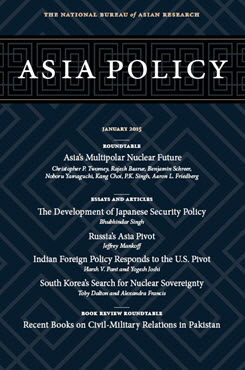Nuclear Stability and Polarity in Post-Cold War Asia
This is one of seven essays in the roundtable “Approaching Critical Mass: Asia’s Multipolar Nuclear Future.”
Rajesh Basrur is Professor of International Relations in the S. Rajaratnam School of International Studies at Nanyang Technological University in Singapore.
This is one of seven essays in the roundtable Approaching Critical Mass: Asia’s Multipolar Nuclear Future.
Contrary to the widespread notion that the “second nuclear age” is hugely different, and for the worse, from the first nuclear age, the reality is more complex. The post–Cold War period is indeed different from the preceding one, but the differences have not been properly grasped. While there are certainly dangers associated with the current age, we need not be distracted by many of the so-called risks—such as arms racing, brinkmanship, and irrationality—identified by strategic experts.
The nature of the “second nuclear age” has been widely misunderstood. The apparently sharp divide between the Cold War era and the present age is illusory. There has been no great transformation from nuclear bipolarity to multipolarity; on the contrary, strong similarities persist. Nor is the view accurate that the relative stability of yesteryear has been replaced by a high degree of uncertainty and instability. In important ways, the current nuclear-strategic landscape is more stable than before. Yet in other ways that are also important, it is less stable. It would be wise to jettison our penchant for simple contrasts and recognize today’s complexities if we are to attend properly to the nuclear problems of our time.
How Different Is the Post-Cold War Era?
Analysts often identify four chief differences between the two periods, of which only two are accurate. The first difference is that the center of gravity in nuclear politics has shifted from the Euro-Atlantic region to the Asia-Pacific. This is correct: Europe is no longer a focal point of contention, and two important European players during the Cold War, Britain and France, do not figure as prominently in contemporary nuclear politics. Russia, which has a partly Asian identity, remains a key player, however.
Second, whereas the Cold War was dominated by a single rivalry with global dimensions (between the United States and the Soviet Union), there is no relationship of comparable magnitude today. This too is correct: China…
About Asia Policy
Asia Policy is a peer-reviewed scholarly journal presenting policy-relevant academic research on the Asia-Pacific that draws clear and concise conclusions useful to today’s policymakers. Asia Policy is published quarterly in January, April, July, and October and accepts submissions on a rolling basis. Learn more


